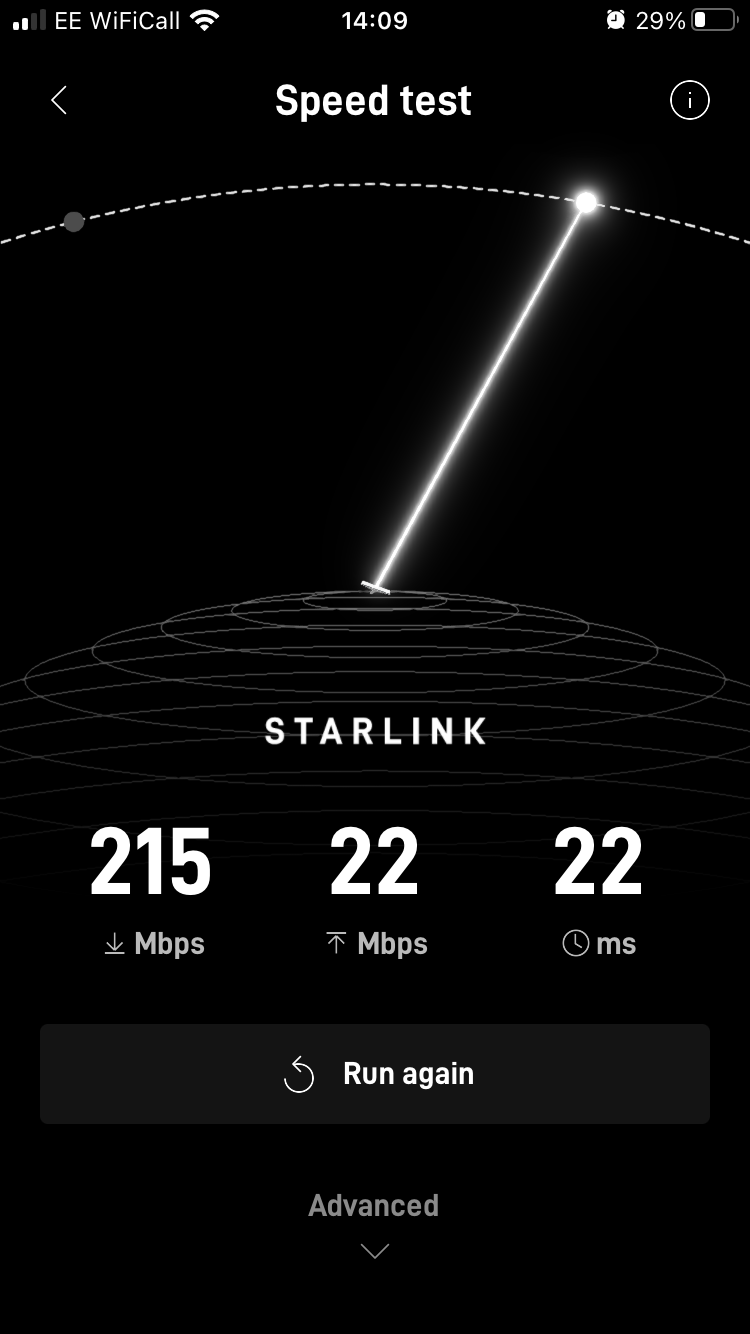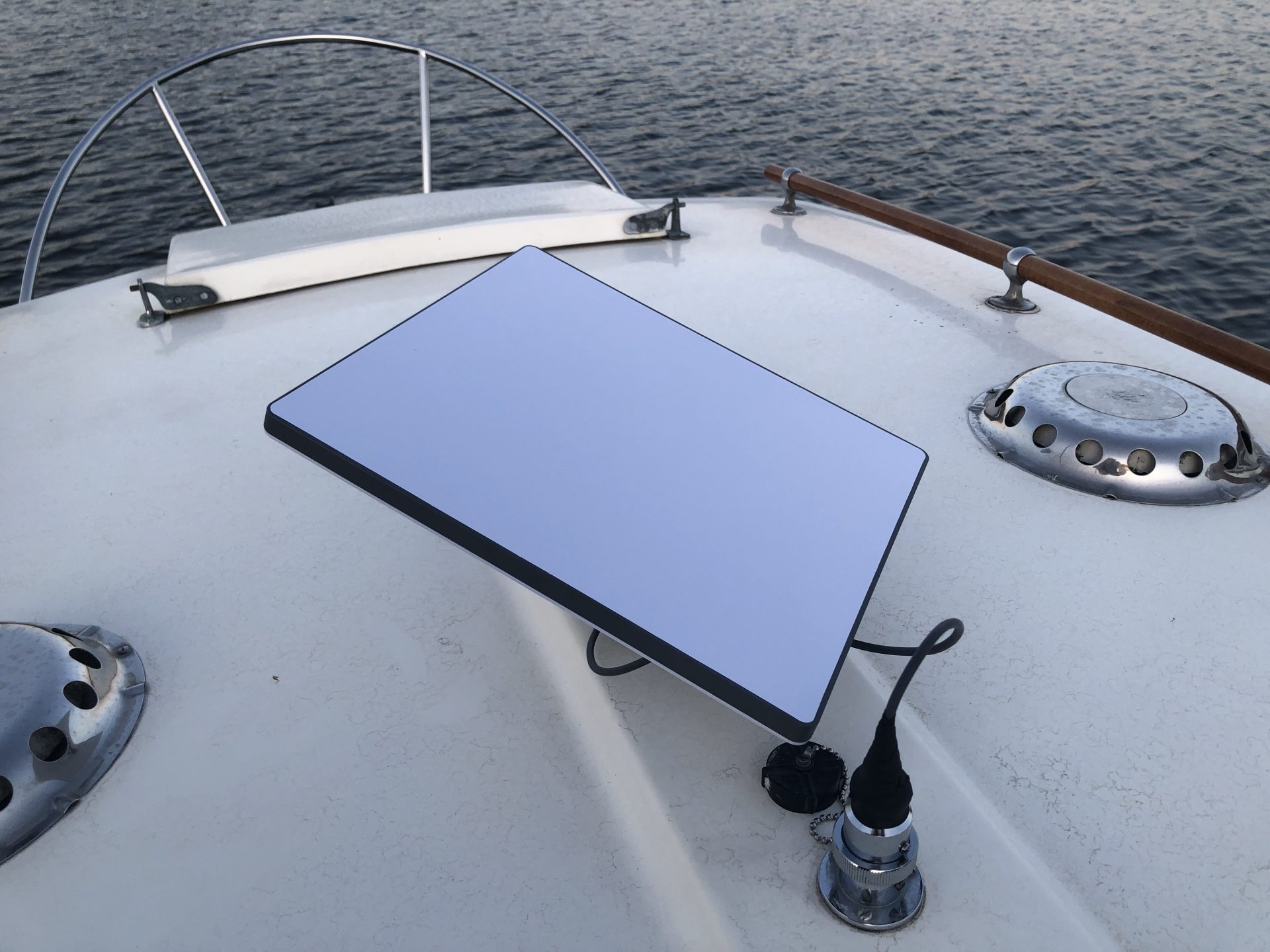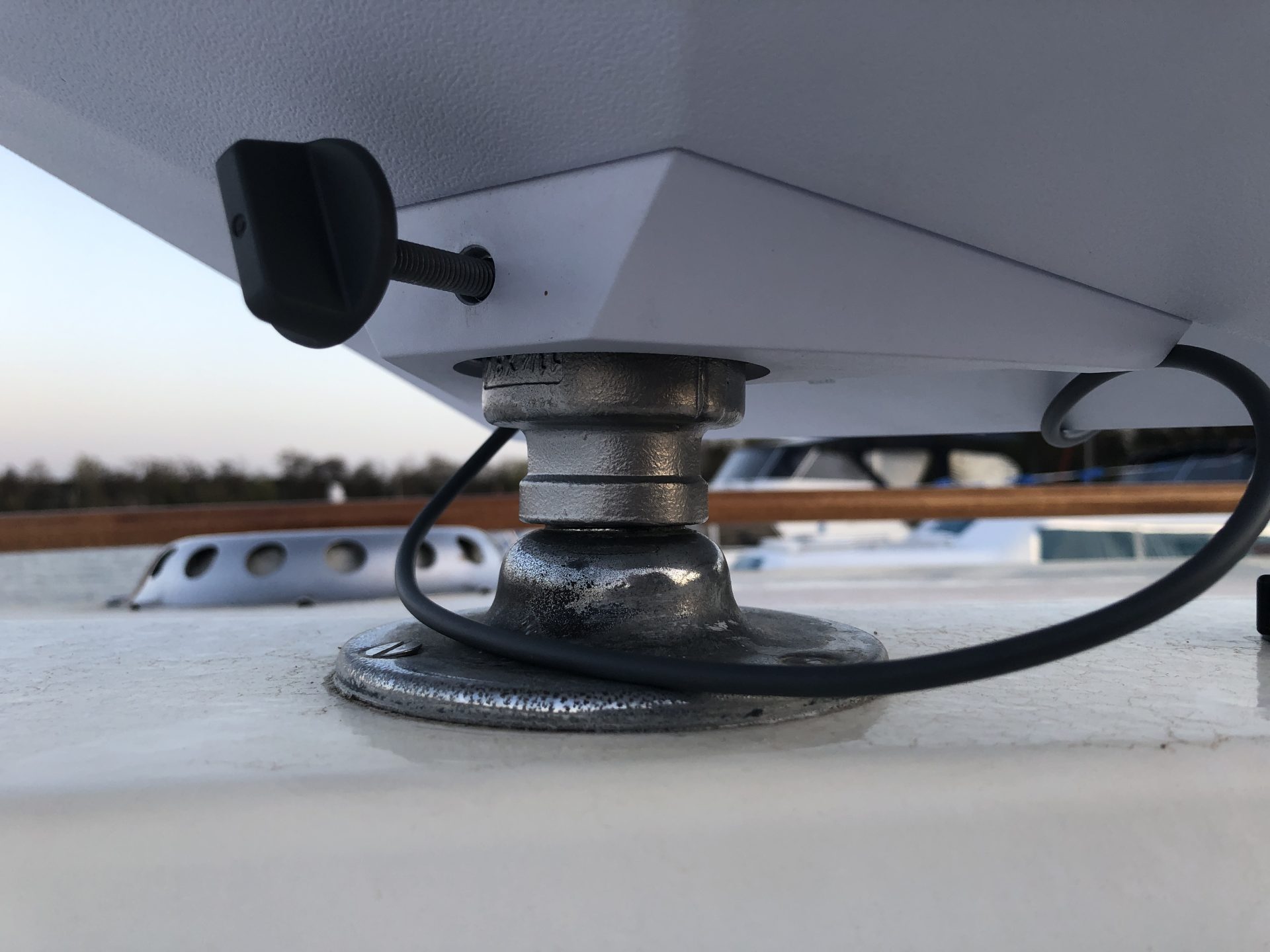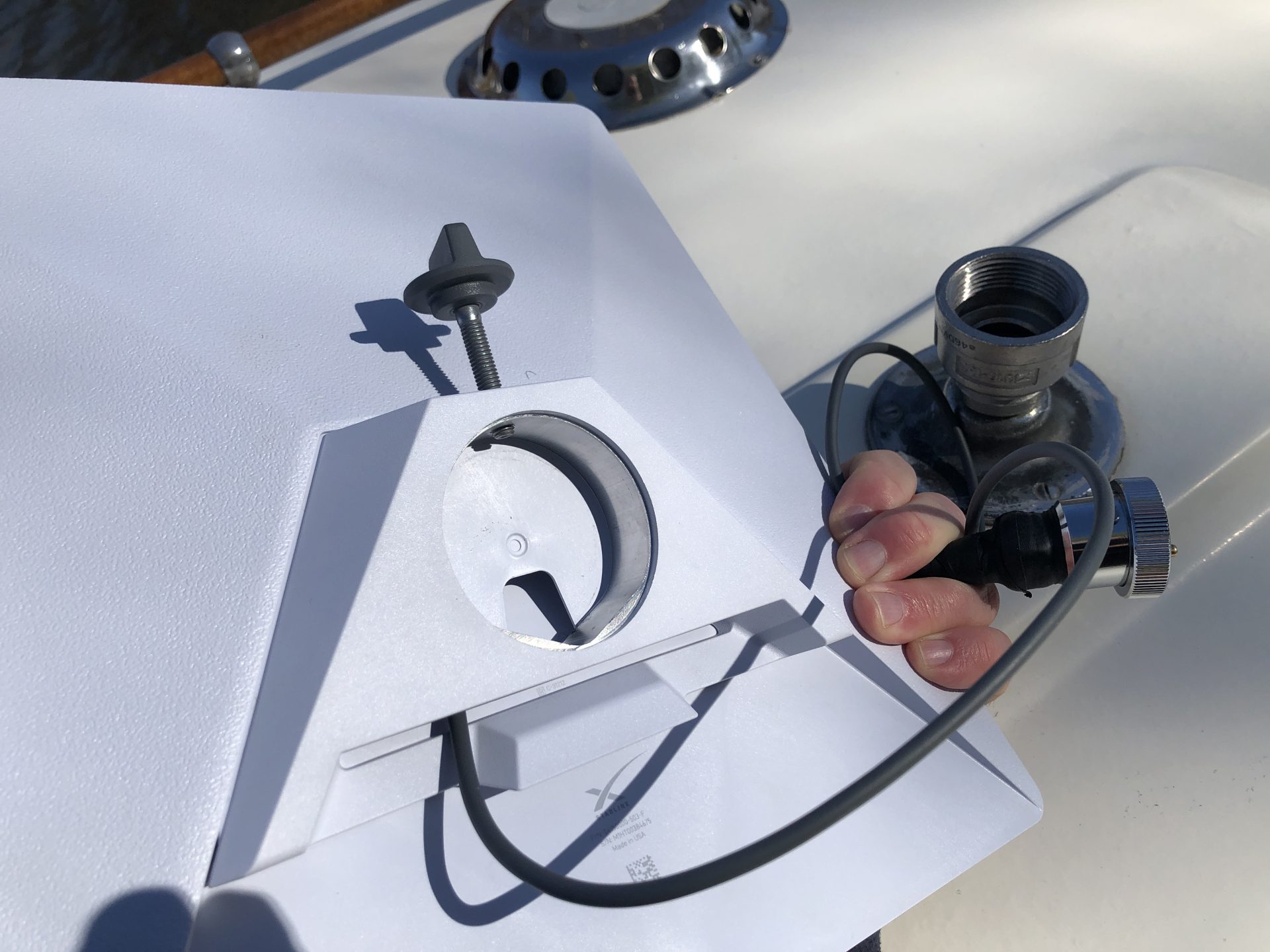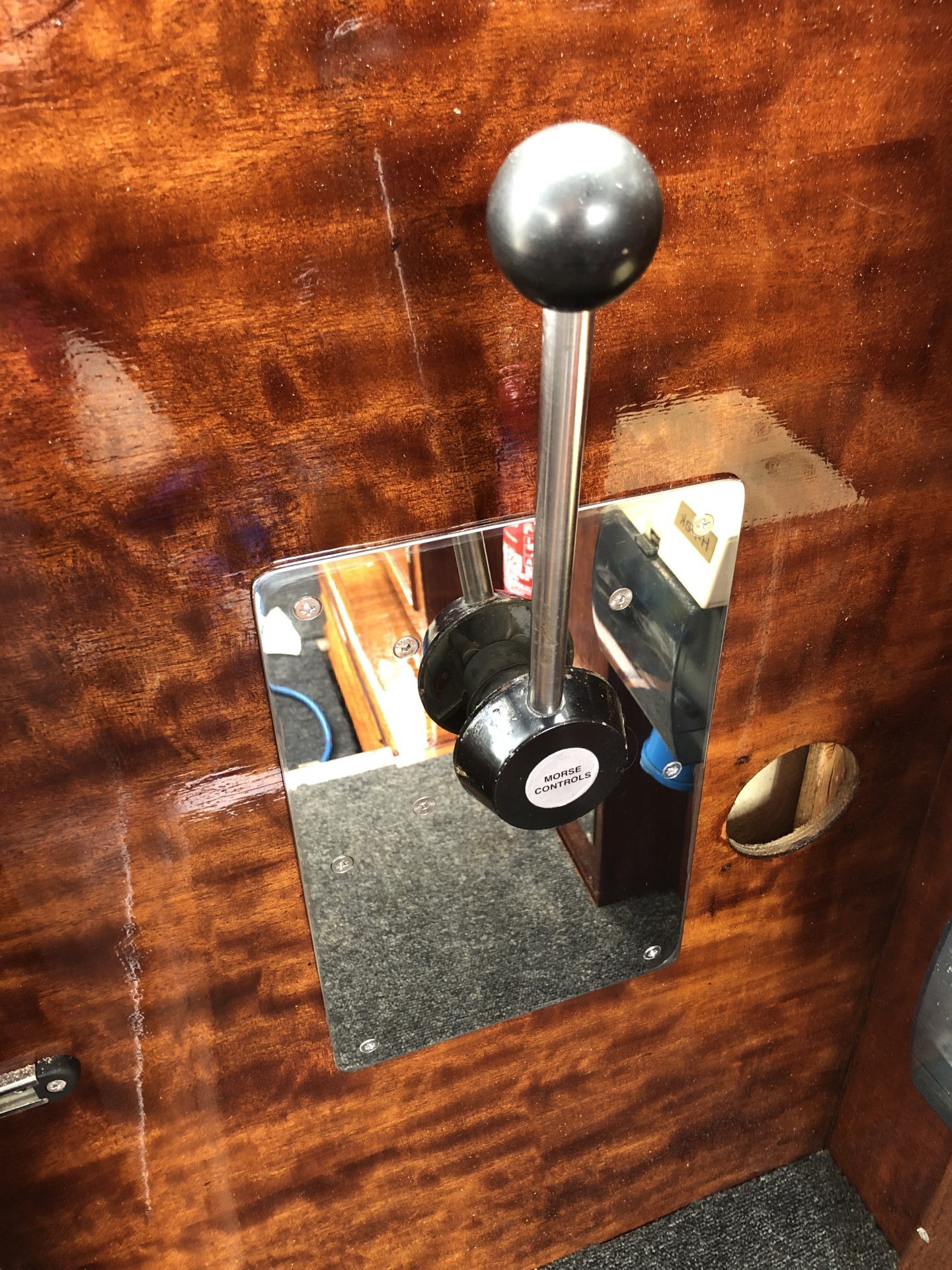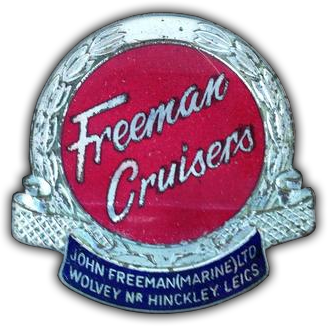by chris
Share
I completely understand the concept of going off-grid and leaving the world behind when out on the boat but in reality, when the night or weather sets in and you can’t afford (or find a mooring) for the pub, sometimes it’s nice to watch Netflix. In the past I have used a mobile on 4G, tethered to a tablet but getting a signal on the Broads on any network is marginal at the very best. In fact making a phone call is challenging. To this end I decided to try a Starlink Mini. I’ve used a Gen 2 Starlink at my ‘off-grid’ home with great success having had huge contention issues using mobile networks which made live streaming audio and video a reality. The idea is now to use the Starlink Mini for both home and on White Lady given that the Mini can be powered off 12 or 24v and has a built in router.
I decided to leverage use out of the deck spotlight mounting as the spotlight only comes out for special occasions whilst being entirely useless as a spotlight in the real world (unless navigating tunnels), destroying your night vision and reflecting off every deck surface.
The standard deck mounting has a 3/4″ male thread and the cabling to the spotlight should be suitably robust to power the Starlink. I know mine is as I rewired it a couple of years ago with 5mm tinned twin. The chrome deck connectors look pretty, but have terrible waterproofing, so when I assembled them, I packed them with silicone grease and used self amalgamating tape to improve the odds of keeping everything watertight. Of course this negates the plugs looking ‘pretty’ but needs must !
The Starlink Mini comes with a fairly flimsy tube mount which is more suited to scaffold pole than a 25mm threaded tube, so I tracked down a stainless steel reducing socket (1/4″ BSP to 2″ BSP) on eBay which marries everything perfectly and allows you to tighten the thumbscrew on the Starlink pole mount without damaging threads.
I had to buy a short Starlink Mini cable to cannibalise and fit with the larger 2-pin chrome plug. This needed to be as short as reasonably possible whilst allowing articulation to avoid voltage drops.
On the subject of voltage drops, there have been reports of Mini’s not working well on 12v systems. The reality is that lead acid batteries generally discharge with a gradual reduction in voltage, relatively quickly dropping below the Starlink’s operational voltage threshold. This can be improved on by using substantial cabling as short as possible. I’m fortunate enough to be using a Lithium LiFePo4 battery for domestic supply which has a much more steady discharge curve (but then falls off a cliff). This supply does appear to be more favoured by the Starlink.
In terms of operation, the Mini works like a charm, getting an average of 90mbps down and 12mbps up. The phone app is great for setting up the alignment when static but I’ve also found that speeds are perfectly adequate when underway without perfect alignment. Although it varies, the dish pulls a shade over 2 amps, so it’s worth switching it off when not needed.One final bonus is that most mobile phones will allow WiFi Calling, so you can also have reliable phone and WhatsApp calls as long as the recipient isn’t on the Broads !
The Starlink Mini ‘Roaming’ subscription is £96 per month with unlimited data (there is a cheaper tariff capped at 50GB) and can be activated/deactivated in monthly increments rounded up to your monthly billing date.
(There is of course an Elon Musk backlash at the time of posting. My take on it is that he wouldn’t care less or even notice if I did or didn’t have a subscription)
6 months later
Since creating this post I have managed to get quite a bit of use from my Starlink and wouldn’t be without it.
I’ve since discovered that it will work perfectly well when placed just behind my windscreen on it’s own fold out stand. What is very useful is that the same plug connector was used for both my window wipers and spotlight (both using heavy cabling), so by a stroke of good luck, the Starlink will go anywhere.
Of course the Starlink works best when properly aligned without obstructions such as window frames but for my purposes, even at half it’s potential speed, I’m more than happy.

